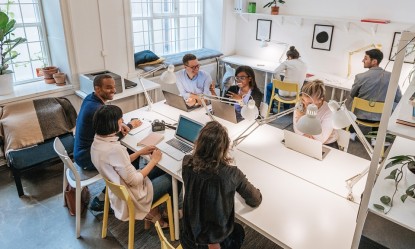Agenda

Lees meer CFPB Jaarcongres 2025 | 5 jaar hybride werken: wat werkt, wat schuurt?
Waarom dit congres?
Vijf jaar hybride werken heeft gezorgd voor flexibiliteit, nieuwe routines en innovatieve werkvormen. Maar het heeft ook geleid tot nieuwe vragen. Hoe verbeteren we het kantoor? Hoe krijg je zicht op veranderende behoeften van medewerkers? Wat betekenen de hoge pieken en diepe dalen in kantoorgebruik voor de beleving van werk? Tijdens deze editie van het CFPB Jaarcongres reflecteren we op vijf jaar hybride werkpraktijk. Niet alleen met data, maar ook met praktijkervaringen, gedragsinzichten en ontwerpprincipes. We kijken terug en vooruit. Wat werkt écht? Wat schuurt nog? En hoe maken we op basis van die lessen betere keuzes voor de toekomst van werk?
Lees meer

Lees meer CFPB Kenniskring III
Voor onze deelnemers aan het programma Werk in Transitie organiseren wij 4x per jaar een kenniskring.
Lees meer

Lees meer CFPB Kenniskring IV
Voor onze deelnemers aan het programma Werk in Transitie organiseren wij 4x per jaar een kenniskring.
Lees meer